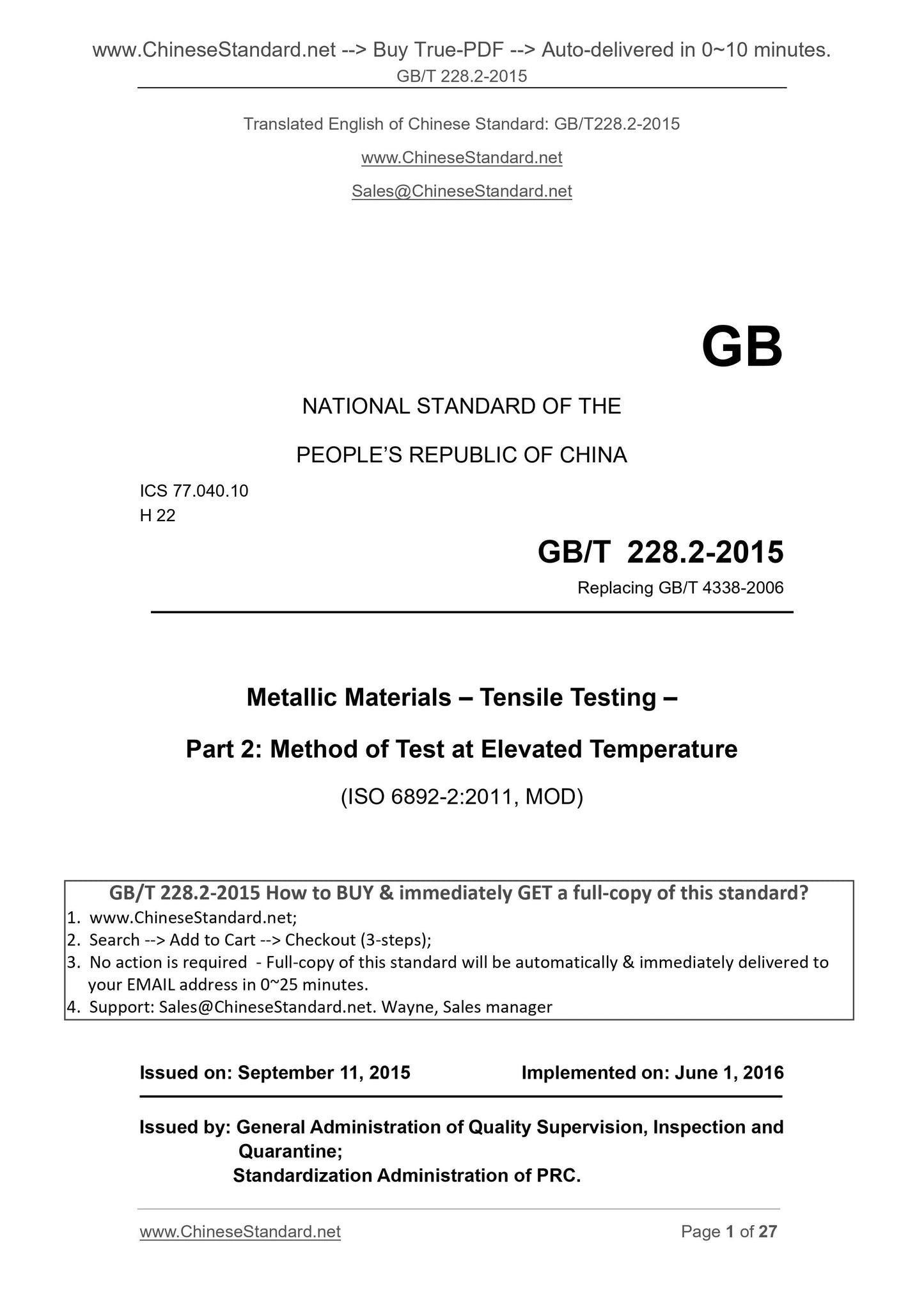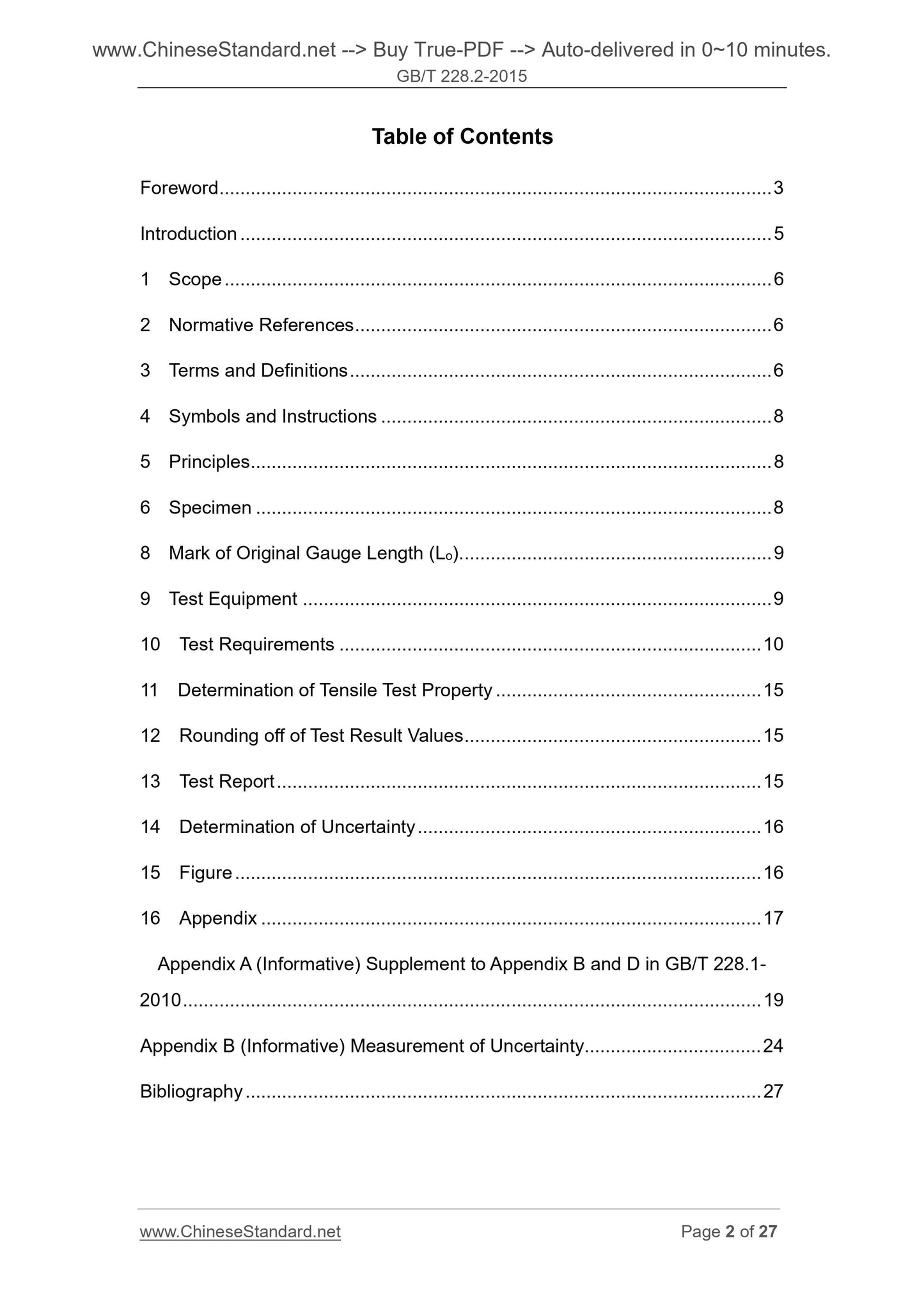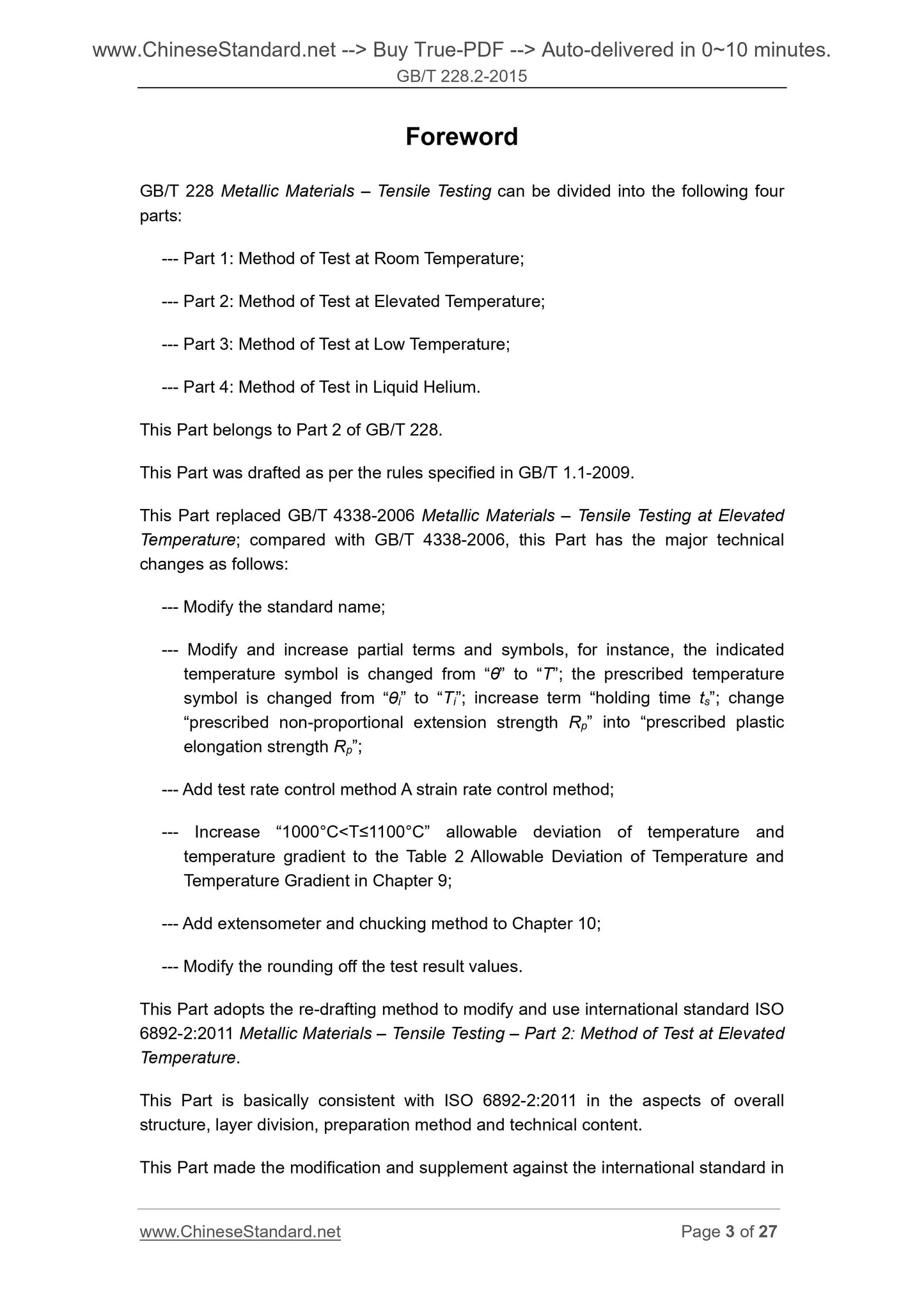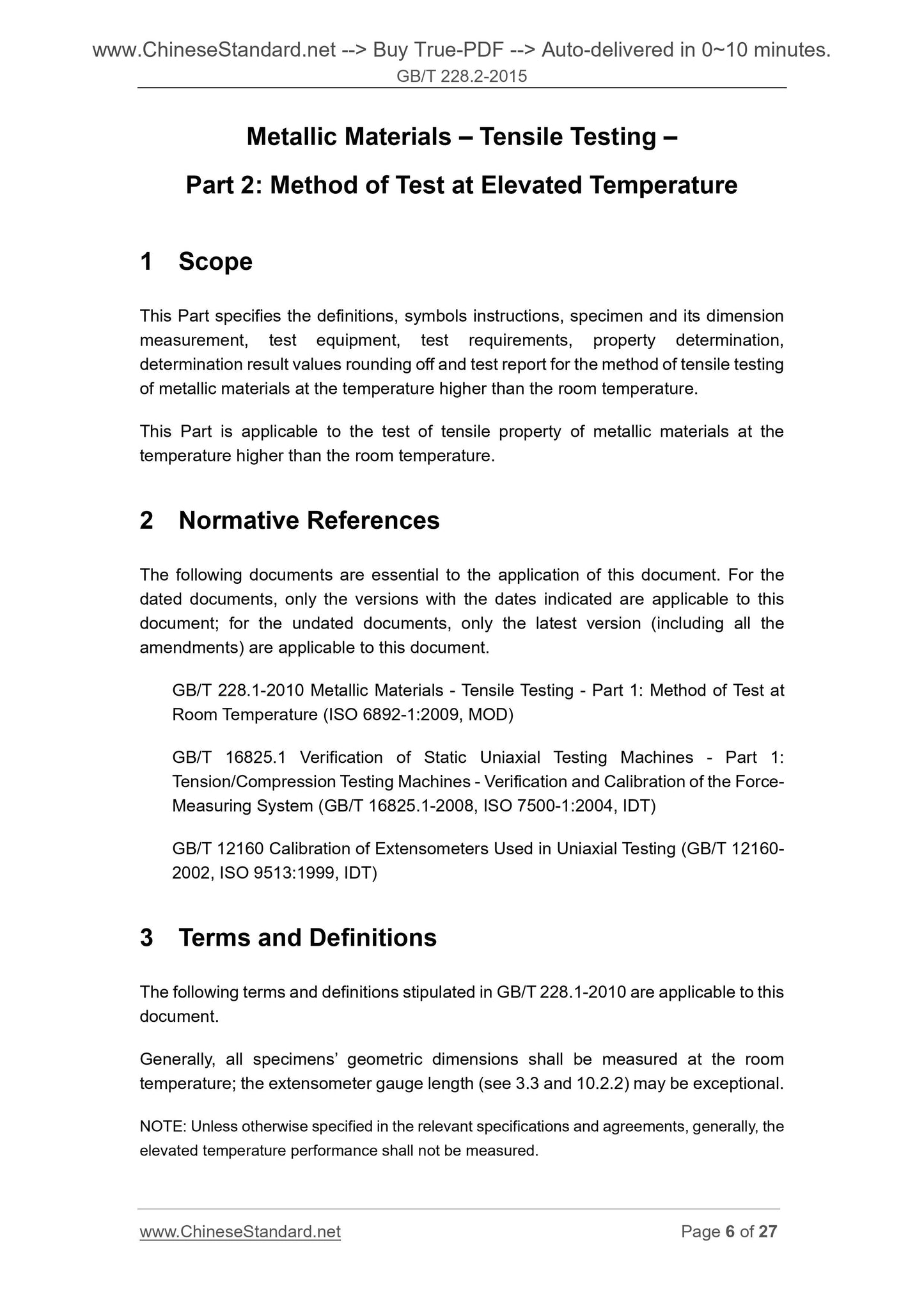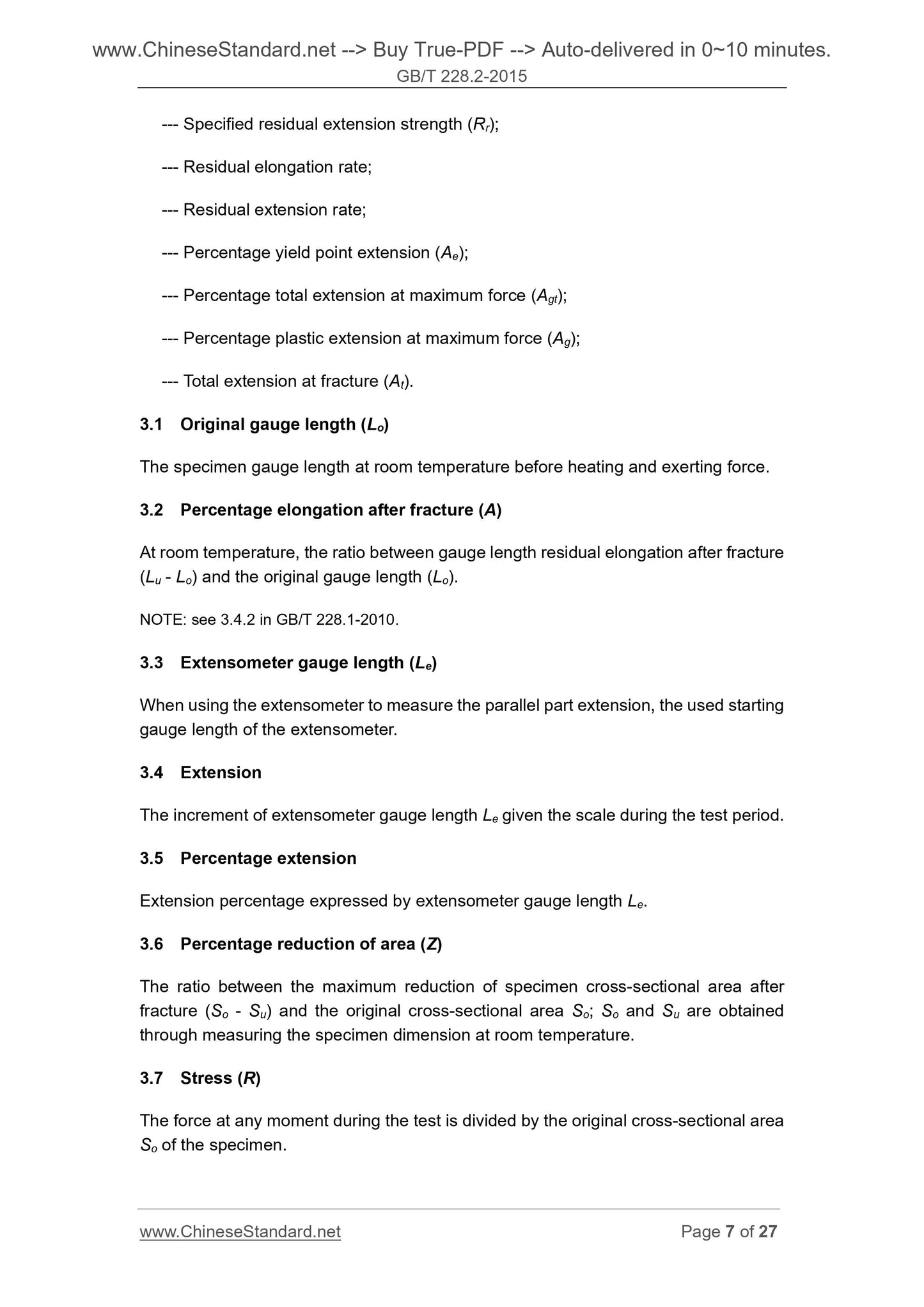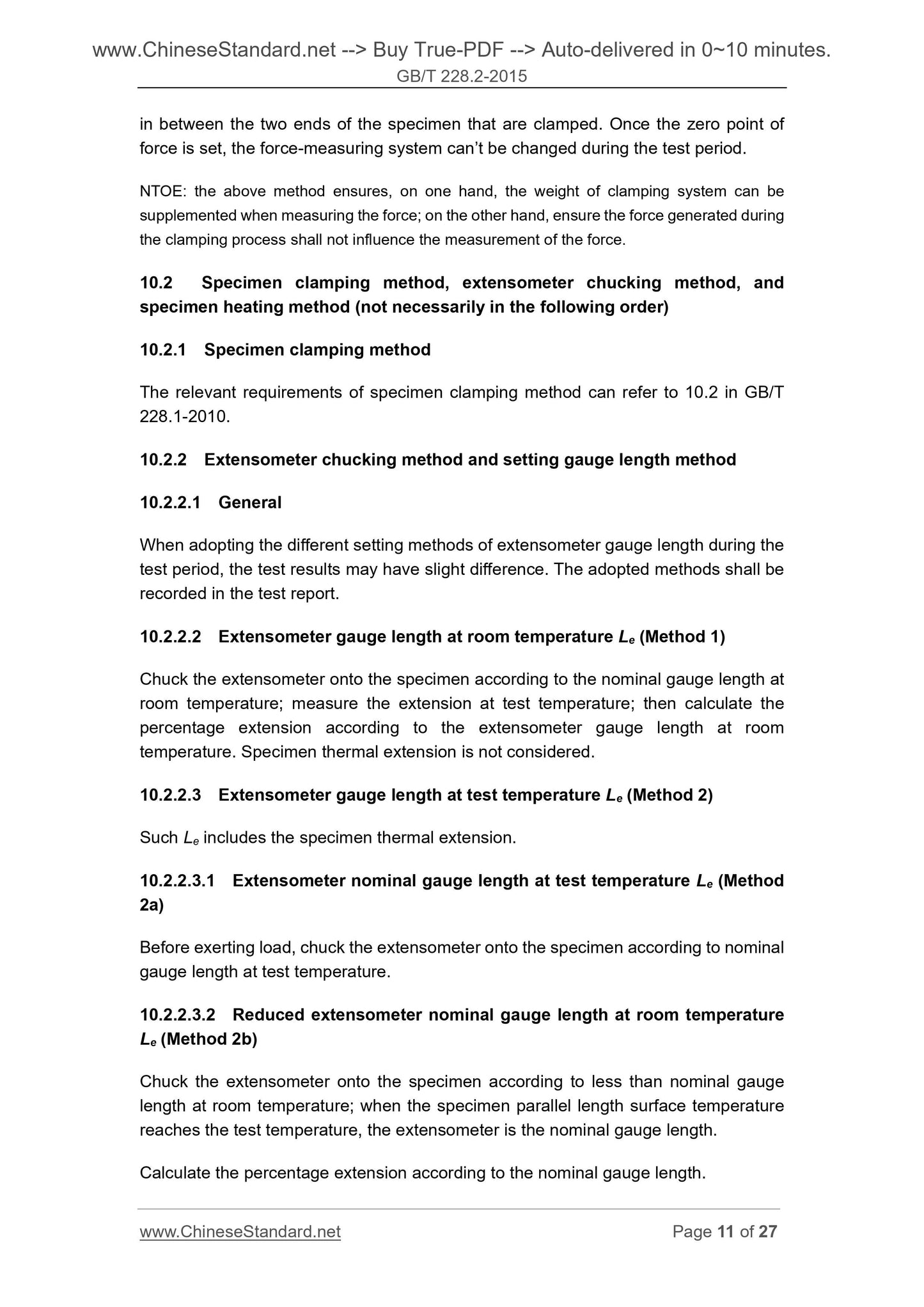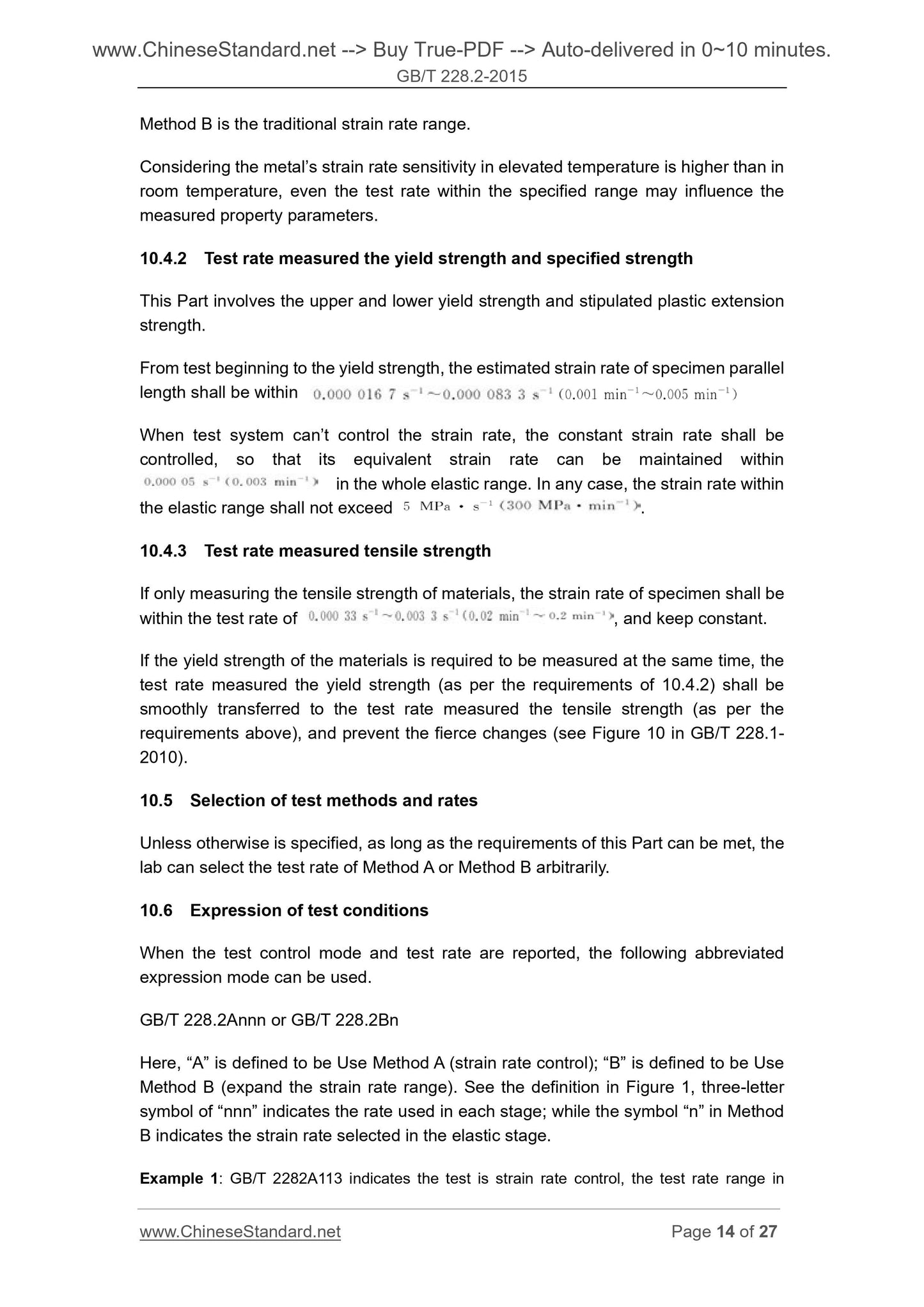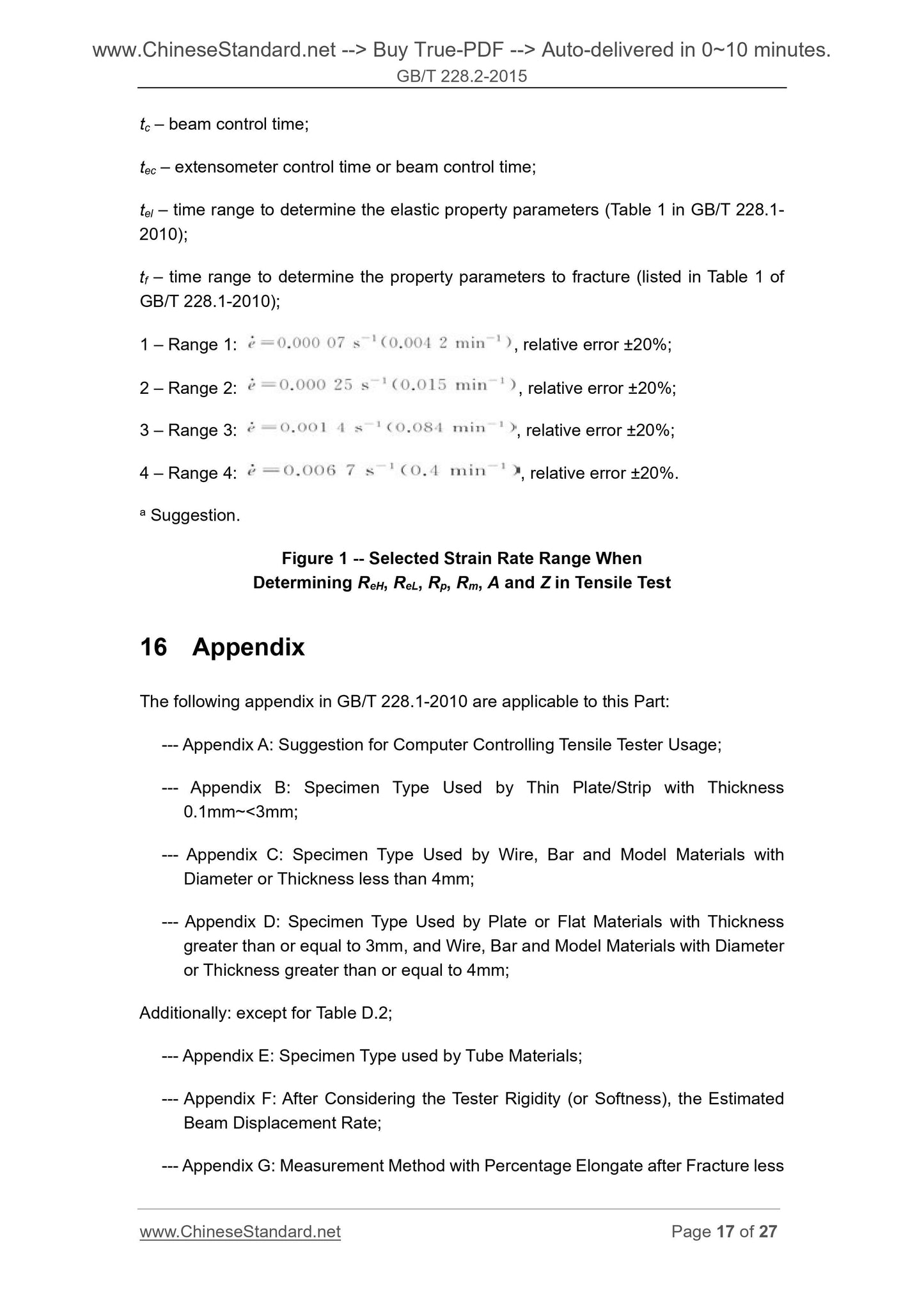1
/
of
9
www.ChineseStandard.us -- Field Test Asia Pte. Ltd.
GB/T 228.2-2015 English PDF (GB/T228.2-2015)
GB/T 228.2-2015 English PDF (GB/T228.2-2015)
Regular price
$85.00
Regular price
Sale price
$85.00
Unit price
/
per
Shipping calculated at checkout.
Couldn't load pickup availability
GB/T 228.2-2015: Metallic materials -- Tensile testing -- Part 2: Method of test at elevated temperature
Delivery: 9 seconds. Download (and Email) true-PDF + Invoice.Get Quotation: Click GB/T 228.2-2015 (Self-service in 1-minute)
Newer / historical versions: GB/T 228.2-2015
Preview True-PDF
Scope
This Part specifies the definitions, symbols instructions, specimen and its dimensionmeasurement, test equipment, test requirements, property determination,
determination result values rounding off and test report for the method of tensile testing
of metallic materials at the temperature higher than the room temperature.
This Part is applicable to the test of tensile property of metallic materials at the
temperature higher than the room temperature.
Basic Data
| Standard ID | GB/T 228.2-2015 (GB/T228.2-2015) |
| Description (Translated English) | Metallic materials -- Tensile testing -- Part 2: Method of test at elevated temperature |
| Sector / Industry | National Standard (Recommended) |
| Classification of Chinese Standard | H22 |
| Classification of International Standard | 77.040.10 |
| Word Count Estimation | 22,298 |
| Date of Issue | 2015-09-11 |
| Date of Implementation | 2016-06-01 |
| Older Standard (superseded by this standard) | GB/T 4338-2006 |
| Quoted Standard | GB/T 228.1-2010; GB/T 16825.1; GB/T 12160 |
| Adopted Standard | ISO 6892-2-2011, MOD |
| Regulation (derived from) | National Standard Announcement 2015 No.25 |
| Issuing agency(ies) | General Administration of Quality Supervision, Inspection and Quarantine of the People's Republic of China, Standardization Administration of the People's Republic of China |
| Summary | This Standard specifies the temperature of the metal material tensile test method definitions, symbols and instructions, the sample and its measurement, test equipment, test requirements, performance was measured at a temperature above room temperature, rounding off measurement results and test reports. This Standard applies to the determination of tensile properties of metallic materials at temperatures higher than room temperature. |
Share
